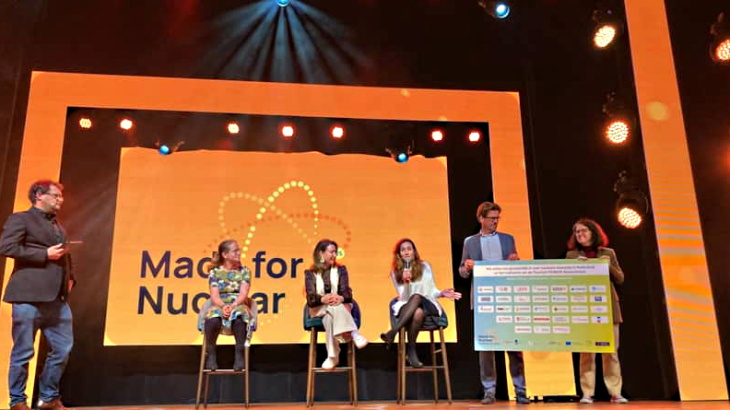The most extensive international report to date has concluded that the only observable health effects from the Fukushima accident stem from the stresses of evacuation and unwarranted fear of radiation.
Some 80 international experts contributed to a report by the UN Scientific Committee on the Effects of Atomic Radiation (UNSCEAR), which was then reviewed by 170 experts at the committee's meeting in Vienna that started on 27 May. It concluded "Radiation exposure following the nuclear accident at Fukushima Daiichi did not cause any immediate health effects. It is unlikely to be able to attribute any health effects in the future among the general public and the vast majority of workers."
"On the whole, the exposure of the Japanese population was low, or very low, leading to correspondingly low risks of health effects in later life"
Wolfgang Weiss
UNSCEAR
The only exception are the emergency nuclear workers that received radiation doses of over 100 mSv during the crisis triggered by the 15 metre tsunami that struck the plant on 11 March 2011. Records show that 146 workers fall into this category. They will be monitored closely for "potential late radiation-related health effects at an individual level."
By contrast, the public was exposed to 10-50 times less radiation. Most Japanese people were exposed to additional radiation amounting to less than the typical natural background level of 2.1 mSv per year that comes mainly from the ground and from space. People living in Fukushima prefecture are expected to be exposed to around 10 mSv over their entire lifetimes, while for those living further away the dose would be 0.2 mSv per year.
"On the whole, the exposure of the Japanese population was low, or very low, leading to correspondingly low risks of health effects in later life," said Wolfgang Weiss of UNSCEAR. The conclusion reinforces the findings of several international reports to date, including one from the World Health Organisation (WHO) that considered the health risk to the most exposed people possible: a postulated girl under one year of age living in Iitate or Namie that did not evacuate and continued life as normal for four months after the accident. Such a child's theoretical risk of developing any solid cancer by age 89 would be increased from 29.04% to 30.20%, according to WHO's analysis.
Social and societal effects
The emergency situation at Fukushima Daiichi began on 11 March 2011 but it was not until 15 March that the accident sequence culminated in its most significant emission of radioactivity. Japanese authorities used the intervening days to evacuate residents from a 20 kilometre radius and advise those in a further 10 kilometre zone to remain indoors when possible. A further area to the northwest was evacuated on a longer timescale. UNSCEAR said that these actions taken to protect the public "significantly reduced exposures."
The sheltering order was lifted when the power plant was stabilised around September 2011 and the 20 kilometre and additional areas have been progressively reclassified for various levels of controlled entry. Residents can return without protective gear to repair tsunami damaged homes in the majority of the area, although they are still not allowed to stay overnight and some areas remain strictly off limits.
It is this upheaval to people's lives that has brought real health effects, and these will need "special attention" in coming years, said Carl-Magnus Larsson, chair of UNSCEAR. "Families are suffering and people have been uprooted and are concerned about their livelihoods and futures, the health of their children... it is these issues that will be the long-lasting fallout of the accident."
UNSCEAR's report "will be the most comprehensive international scientific analysis of the information available to date" when published in full later this year at the UN General Assembly.
Researched and written
by World Nuclear News




_16403_79272.jpg)


_69218.jpg)

_76087_55556.jpg)



